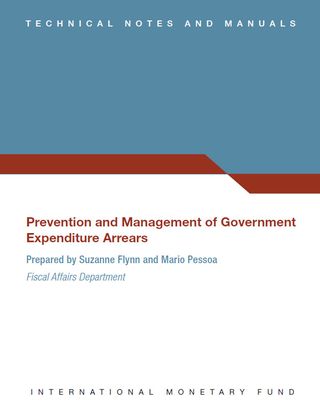Posted by Mario Pessoa and Suzanne Flynn
The accumulation of government expenditure arrears is one of the most common problems in public financial management (PFM).A survey of 121 Public Expenditure and Financial Accountability (PEFA) country assessment reports revealed that, in a third of the countries assessed, arrears amounted to more than 2 percent of total central government expenditure. In a further 28 percent of countries, information on payments in arrears was not available, presenting a risk that the real size of the governments’ deficit is concealed and the level of its liabilities is understated. It is not surprising that measures to control arrears feature prominently as benchmarks in many IMF-supported programs.
A new IMF Technical Note and Manual (TNM) on “Prevention and Management of Government Expenditure Arrears” is the first comprehensive guide on this subject. The note provides a common definition of expenditure arrears—for which there is surprisingly no international standard—and of the related concepts of commitments, payables, and liabilities. It discusses the mechanisms through which arrears can lead to reduced economic growth, higher costs of service provision, interruptions in the delivery of public services, increased avenues for rent seeking, rising interest rates and reductions in government tax revenues.
Arrears can be caused by shortcomings at any stage of the PFM cycle, including: unrealistic budgets; lack of controls at the commitment stage of the expenditure cycle; poor cash management systems that focus on cash rationing and controlling expenditures at the payment stage; and inadequate sanctions to enforce compliance with internal control regulations, thus weakening their effectiveness.
The note presents the experience of more than 20 counties in developing strategies to prevent, manage and clear arrears. It suggests that in order to address an arrears problem, countries should analyze the underlying weaknesses in their PFM system that allowed arrears to accumulate, and design suitable remedial measures. Depending on the causes, these measures might include: strengthening the legal framework to include a clear and enforceable definition of when a payment is in arrears; defining appropriate reporting requirements for spending agencies; building the capacity of the finance ministry to detect arrears at an early stage; and strengthening enforcement provisions in the PFM law. One of the most effective preventive measures is a robust commitment control system which, according to PEFA data, is strongly correlated with a reduced level of arrears.
Other preventive measures discussed in the note include: enhancing the credibility of the budget; improving accounting and reporting; enhancing cash and debt management and the links between the two, to ensure that cash is available when needed; and strengthening oversight of both sub-national governments and state-owned enterprises.
While preventative measures are the key to avoiding the build-up of arrears, when the system fails or technical measures are unsuccessful, and arrears continue to accumulate, a strategy is needed for clearing these obligations. The note discusses an approach that countries might adopt to clear expenditure arrears in a transparent, comprehensive, credible and realistic way. The suggested approach focuses on making a full assessment of the existing stock of arrears, and defining a process for verifying, classifying, prioritizing, and eventually liquidating these arrears.
The new TNM is available in English here. More TNMs are available in English here.
Note: The posts on the IMF PFM Blog should not be reported as representing the views of the IMF. The views expressed are those of the authors and do not necessarily represent those of the IMF or IMF policy.






